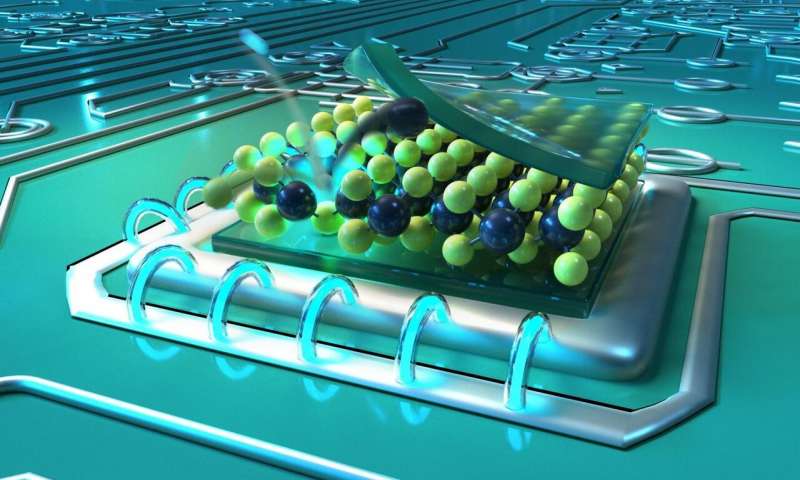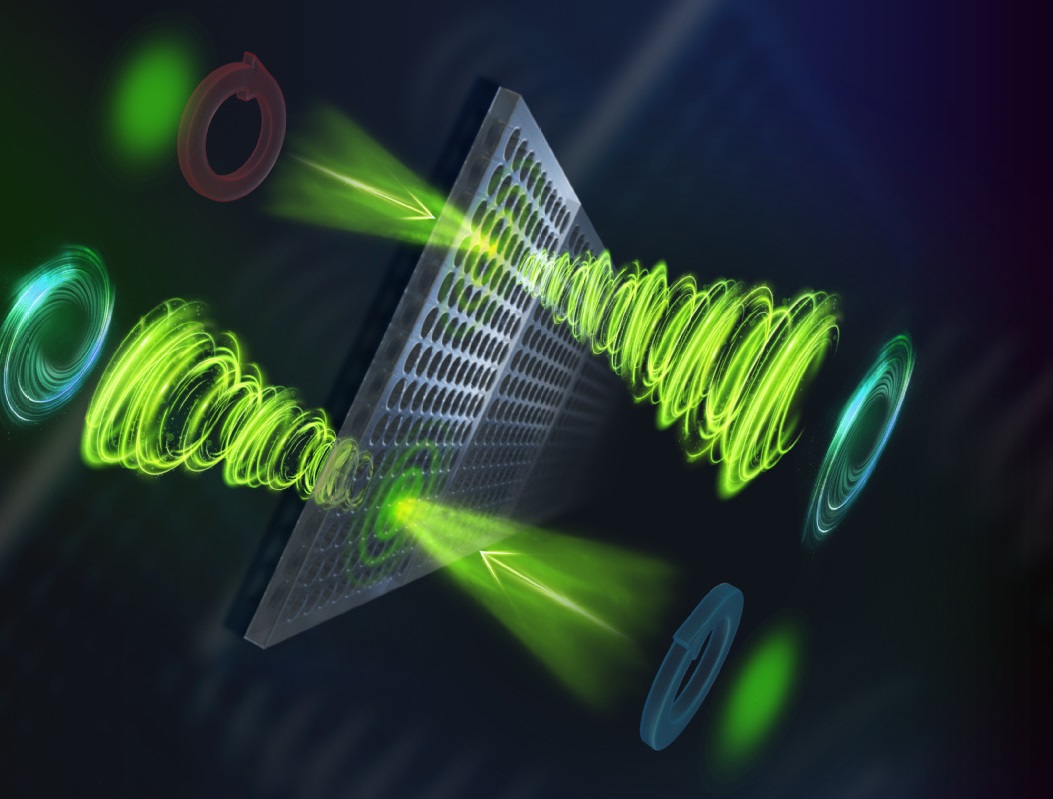
创新背景
拓扑刻画物体的整体特性,引入物理学后为认识世界提供了独特的角度,促进量子力学等发展。微观粒子的研究必须以量子体系深入,拓扑量子模拟一直是量子力学研究的重要方向。拓扑量子模拟可以利用独特的量子效应构建精准可控的量子体系,主动操控、演化和观测研究量子系统的性质。量子模拟发展对各项基础物理学和化学研究都具有重要意义。
创新过程
维度是宇宙中物质特性的重要决定量。三维物理世界限制人们研究三维以上的物质及其原理和变化。拓扑量子模拟需要在三维世界创建三维以外的维度进行研究。2022年4月19日,《自然·通讯》发表了《简并腔中扭曲光子的拓扑能带结构》,中国科学技术大学研究团队开发的拓扑量子模拟新方法。

研究人员通过人工合成维度的方式来解决维度限制,将携带不同轨道角动量的涡旋光子束缚在简并光学谐振腔内,通过引入光子的自旋轨道耦合人工合成了一维的拓扑晶格,实现基于简并腔中涡旋光子的拓扑量子模拟。自旋轨道耦合是一种相对论性的量子效应,它将粒子的自旋与动量联系起来。
涡旋光子携带的轨道角动量数目理论上是无限的,是构建人工合成维度的理想载体。研究团队在2015年周正威教授研究组的量子模拟方案上进一步进行长期实验探索,先后搭建了基于平面镜、球面镜和椭球面镜的简并光学腔,实现腔内超过46阶轨道角动量模式的谐振。
腔内光子所携带的轨道角动量与一维离散拓扑晶格相对应。携带不同轨道角动量的光子可以等效为位于不同晶格格点上的准粒子,并通过自旋自由度将具有不同轨道角动量的光子耦合起来。研究创造性地将具有各向异性的液晶相位片引入简并腔中,促进腔内涡旋光子轨道角动量和光子自旋耦合,模拟出粒子在不同晶格格点之间移动反复的情况。

研究利用共振能谱探测技术刻画该自旋轨道耦合系统的态密度和能带结构。该实验装置具有优异的可调谐性能,清晰展现了周期性驱动系统能带打开和闭合的演化过程。之后进一步引入不同的演化时序,系统研究不同拓扑结构的特性并探测到拓扑绕数。

研究成果证明了以涡旋光子固有自旋和轨道角动量作为人工合成维度的可行性,为拓扑物理系统相关研究提供了一个可行实验平台,推进拓扑量子模拟方式拓展,促进量子力学和量子效应探究发展。
创新关键点
基于简并腔中涡旋光子人工合成维度,研发拓扑量子模拟新方案。
Innovative topological quantum simulation methods by binding vortex photons in a degenerate optical cavity
Dimension is an important determinant of the properties of matter in the universe. The three-dimensional physical world restricts people to study more than three-dimensional matter and its principles and changes. Topological quantum simulations require the creation of dimensions beyond three dimensions for research in the three-dimensional world. On April 19, 2022, Nature Communications published "Topological Band Structure of Twisted Photons in Degenerate Cavities", a new method for topological quantum simulation developed by a research team at the University of Science and Technology of China.
The researchers solved the dimensional limitation by artificially synthesizing dimensions, confining vortex photons carrying different orbital angular momentums in a degenerate optical resonator, and artificially synthesized a one-dimensional topological lattice by introducing the spin-orbit coupling of photons. Realization of topological quantum simulations based on vortex photons in degenerate cavities. Spin-orbit coupling is a relativistic quantum effect that links a particle's spin to its momentum.
The number of orbital angular momentum carried by vortex photons is theoretically infinite, which is an ideal carrier for constructing artificial synthetic dimensions. The research team further conducted long-term experimental exploration on the quantum simulation scheme of Professor Zhou Zhengwei's research group in 2015, and successively built degenerate optical cavities based on plane mirrors, spherical mirrors and ellipsoid mirrors, and realized the resonance of more than 46-order orbital angular momentum modes in the cavity.
The orbital angular momentum carried by the photons in the cavity corresponds to a one-dimensional discrete topological lattice. Photons with different orbital angular momentum can be equivalent to quasiparticles located on different lattice points, and the photons with different orbital angular momentum can be coupled through the spin degrees of freedom. The research creatively introduces an anisotropic liquid crystal phase plate into a degenerate cavity, which promotes the coupling of vortex photon orbital angular momentum and photon spin in the cavity, and simulates the repeated movement of particles between different lattice points.
The density of states and energy band structure of the spin-orbit coupled system are characterized by using resonance spectroscopy. The experimental setup has excellent tunability and clearly shows the evolution of the energy band opening and closing of the periodically driven system. After that, different evolution time sequences are further introduced, the characteristics of different topological structures are systematically studied and the topological winding number is detected.
The research results prove the feasibility of using the inherent spin and orbital angular momentum of vortex photons as artificial synthetic dimensions, providing a feasible experimental platform for the research on topological physical systems, promoting the expansion of topological quantum simulation methods, and promoting the exploration of quantum mechanics and quantum effects. develop.
智能推荐
在金晶体的原子光滑表面上压缩声子极化子
2022-08-05使用高灵敏度光学显微镜测量图像声子极化子的光场,观察到中红外光波;将超光滑单晶金片用作h-BN基底的自产金晶体的原子光滑表面,为压缩声子极化子且不减损其寿命提供可能。
涉及学科涉及领域研究方向旋转微波场制造电磁场实现分子气体冷却
2022-07-29利用旋转微波场制造电磁场,避免分子互相粘合,提高分子碰撞频率以实现蒸发冷却,将气体冷却到接近绝对零度。
涉及学科涉及领域研究方向基于稀土铕开发新型光量子材料
2022-08-02结合分子晶体、稀土离子和光的特性,研究铕分子晶体对于光量子技术的作用。
涉及学科涉及领域研究方向使用新方法XLEAP可清晰观察化学过程中的电子
2022-08-17加州门洛帕克——能源部SLAC国家加速器实验室的研究人员发明了一种观察电子运动的方法,这种方法使用强度仅为280阿秒(十亿分之一秒)的强x射线激光爆发。
涉及学科涉及领域研究方向